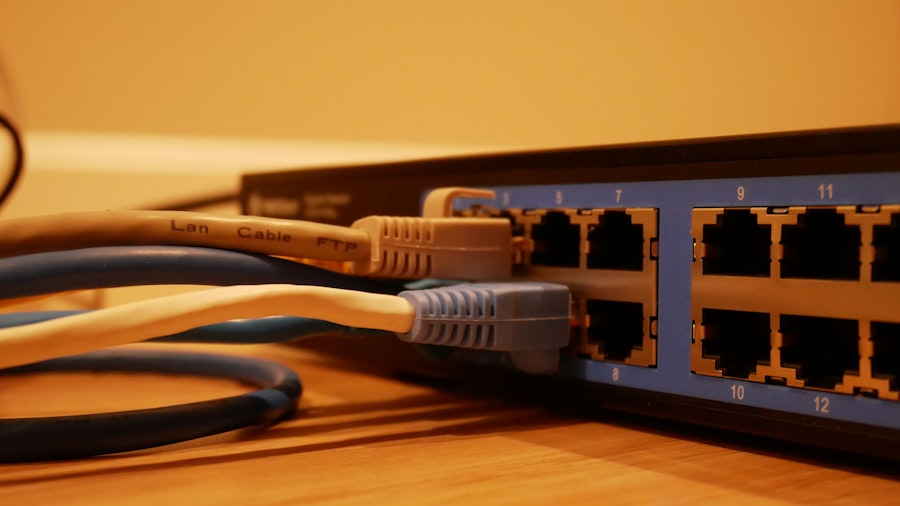Cislunar communication lines, which refer to the communication pathways between Earth and the region between the Earth and the Moon, are becoming increasingly vital as humanity embarks on a new era of space exploration. The Moon is not merely a celestial body; it is viewed as a potential hub for scientific research, resource extraction, and even a stepping stone for missions to Mars and beyond. As such, establishing robust communication lines in this region is essential for ensuring the success of various missions, including crewed lunar landings, robotic explorations, and the establishment of lunar bases.
Moreover, the importance of cislunar communication lines extends beyond mere operational needs. They play a crucial role in fostering international collaboration in space exploration.
As multiple nations and private entities aim to establish a presence on the Moon, effective communication systems will be necessary to coordinate efforts, share data, and avoid potential conflicts. The establishment of these lines will not only support scientific endeavors but also promote peaceful cooperation in outer space, aligning with international treaties and agreements that govern space activities. Thus, understanding the significance of cislunar communication lines is paramount for both current and future endeavors in space exploration.
Key Takeaways
- Cislunar communication lines are crucial for future space exploration and require secure protocols to ensure reliable connectivity.
- Potential threats to cislunar communication lines include cyber attacks, space debris, and natural phenomena, highlighting the need for robust security measures.
- Secure communication protocols for cislunar operations should include encryption, authentication, and redundancy to mitigate potential risks.
- Implementing encryption and authentication measures is essential to safeguard sensitive data and prevent unauthorized access to cislunar communication networks.
- Satellite networks play a vital role in cislunar communication, offering reliable connectivity and coverage for space missions and exploration.
Identifying Potential Threats to Cislunar Communication Lines
As the interest in cislunar space grows, so too do the potential threats to communication lines in this region. One of the most pressing concerns is the risk of interference from both natural and artificial sources. Solar flares and cosmic radiation can disrupt communication signals, leading to data loss or delays in transmission.
Additionally, as more satellites and spacecraft are deployed in cislunar space, the likelihood of signal interference from these devices increases. This interference can compromise mission integrity and pose significant challenges for operators who rely on consistent communication. Another critical threat comes from cybersecurity vulnerabilities.
As cislunar operations become more sophisticated, they will inevitably rely on complex software systems that are susceptible to hacking and other malicious activities. Cyberattacks could lead to unauthorized access to sensitive data or even the manipulation of communication systems, jeopardizing mission objectives and safety. Furthermore, geopolitical tensions may exacerbate these threats, as nations may seek to disrupt each other’s operations in cislunar space.
Identifying these potential threats is essential for developing effective strategies to safeguard communication lines and ensure the success of future missions.
Establishing Secure Communication Protocols for Cislunar Operations

To mitigate the risks associated with cislunar communication lines, establishing secure communication protocols is imperative. These protocols should encompass a range of measures designed to protect data integrity and ensure reliable transmission. One fundamental aspect of secure communication protocols is the implementation of standardized procedures for data transmission.
This includes defining specific formats for data packets, establishing error-checking mechanisms, and ensuring that all communications are logged for accountability. In addition to standardization, secure communication protocols must also incorporate redundancy measures to enhance reliability. This could involve creating multiple communication pathways that can be utilized in case one line fails or becomes compromised.
By diversifying communication methods—such as using both radio frequency and optical communication—operators can ensure that they maintain contact even in adverse conditions. Establishing these secure protocols will not only protect sensitive information but also enhance overall mission success by ensuring that teams can communicate effectively under various circumstances.
Implementing Encryption and Authentication Measures
| Encryption and Authentication Measures | Metrics |
|---|---|
| Data Encryption | Percentage of data encrypted |
| Authentication Methods | Number of authentication methods implemented |
| Encryption Key Length | Average encryption key length in bits |
| Authentication Failures | Number of failed authentication attempts |
Encryption and authentication are critical components of any secure communication strategy, particularly in the context of cislunar operations. Encryption involves encoding data so that it can only be accessed by authorized parties, thereby protecting sensitive information from unauthorized interception or tampering. In cislunar communications, where data may be transmitted over vast distances and through potentially hostile environments, robust encryption methods are essential.
Advanced encryption algorithms can ensure that even if data packets are intercepted, they remain unreadable without the appropriate decryption keys. Authentication measures are equally important in verifying the identity of communicating parties. This process ensures that only authorized users can access or send information within the cislunar communication network.
Techniques such as digital signatures and multi-factor authentication can significantly enhance security by providing layers of verification before any data exchange occurs. By implementing these encryption and authentication measures, operators can create a secure environment for cislunar communications, safeguarding against both external threats and internal vulnerabilities.
Utilizing Satellite Networks for Cislunar Communication
The deployment of satellite networks specifically designed for cislunar communication is a crucial step toward establishing reliable communication lines in this region. These networks can provide continuous coverage and facilitate real-time data transmission between Earth-based control centers and lunar missions. By leveraging satellite constellations positioned strategically around the Moon, operators can ensure that signals are transmitted efficiently without significant delays or interruptions.
Moreover, satellite networks can enhance the resilience of cislunar communication systems by providing multiple pathways for data transmission. In the event that one satellite experiences technical difficulties or is obstructed by lunar terrain, alternative satellites can take over the communication load seamlessly. This redundancy is vital for maintaining operational continuity during critical mission phases, such as landing maneuvers or scientific experiments on the lunar surface.
By investing in satellite networks tailored for cislunar operations, stakeholders can significantly improve the reliability and effectiveness of their communication strategies.
Developing Redundancy and Backup Systems for Cislunar Communication

In addition to utilizing satellite networks, developing redundancy and backup systems is essential for ensuring uninterrupted cislunar communication. Redundancy involves creating multiple systems or pathways that can serve the same purpose; if one system fails, another can take its place without causing disruption. For instance, having alternative communication channels—such as ground-based stations on Earth or relay satellites—can provide fail-safes against potential outages caused by technical malfunctions or environmental factors.
Backup systems should also include comprehensive data storage solutions that allow for the preservation of critical information transmitted during missions. In scenarios where real-time data transmission is compromised, having backup systems in place ensures that valuable scientific data is not lost. These systems can be designed to automatically store data locally on spacecraft or lunar bases until a stable communication link is reestablished.
By prioritizing redundancy and backup solutions in cislunar communication strategies, operators can enhance mission resilience and safeguard against unforeseen challenges.
Collaborating with International Partners for Cislunar Communication Security
As cislunar exploration becomes a global endeavor involving multiple nations and private entities, collaboration with international partners is essential for enhancing communication security. Establishing cooperative agreements allows countries to share best practices, technologies, and resources aimed at securing cislunar communications. By working together, nations can develop standardized protocols that facilitate interoperability among different systems while ensuring robust security measures are in place.
International collaboration also fosters trust among nations engaged in cislunar activities.
Joint exercises simulating various scenarios—such as cyberattacks or signal interference—can help partners prepare for real-world challenges while strengthening their communication infrastructures.
Ultimately, collaboration among international partners will be key to ensuring a secure and sustainable environment for cislunar exploration.
Training Personnel on Cislunar Communication Security Best Practices
The effectiveness of any security strategy hinges on the knowledge and preparedness of personnel involved in cislunar operations. Training programs focused on cislunar communication security best practices are essential for equipping teams with the skills needed to navigate potential challenges effectively. These programs should cover a range of topics, including recognizing cybersecurity threats, understanding encryption protocols, and implementing secure communication procedures.
Regular training sessions can help personnel stay updated on emerging threats and evolving technologies related to cislunar communications. Simulated exercises that mimic real-world scenarios can provide hands-on experience in responding to security incidents or system failures. By fostering a culture of security awareness among personnel, organizations can significantly reduce vulnerabilities associated with human error while enhancing overall mission success.
Conducting Regular Security Audits and Risk Assessments for Cislunar Communication
To maintain robust security measures for cislunar communications, conducting regular security audits and risk assessments is crucial. These evaluations help identify potential weaknesses within existing systems and protocols while assessing their effectiveness against evolving threats. By systematically reviewing security practices, organizations can pinpoint areas requiring improvement or adaptation to new challenges.
Risk assessments should encompass both technical vulnerabilities—such as outdated software or hardware—and operational risks related to personnel training or procedural adherence. By addressing these risks proactively, organizations can implement corrective actions before they escalate into significant issues during critical missions. Regular audits not only enhance security but also instill confidence among stakeholders regarding the integrity of cislunar communication systems.
Adhering to Regulatory and Compliance Standards for Cislunar Communication Security
As cislunar exploration expands, adherence to regulatory and compliance standards becomes increasingly important for ensuring secure communications. Various international treaties and agreements govern activities in outer space; compliance with these regulations helps establish a framework for responsible behavior among nations engaged in cislunar operations. Organizations must familiarize themselves with relevant standards—such as those set forth by the International Telecommunication Union (ITU) or national space agencies—to ensure their practices align with global expectations.
Compliance not only enhances security but also promotes transparency among stakeholders involved in cislunar activities. By adhering to established standards, organizations demonstrate their commitment to responsible exploration while fostering trust among international partners. Furthermore, compliance with regulatory frameworks can facilitate smoother coordination between different entities operating within cislunar space, ultimately contributing to safer and more effective missions.
Investing in Research and Development for Advanced Cislunar Communication Security Technologies
The rapidly evolving landscape of technology necessitates ongoing investment in research and development (R&D) focused on advanced cislunar communication security technologies. As new threats emerge and existing systems become outdated, continuous innovation is essential for maintaining effective security measures. R&D efforts should prioritize developing cutting-edge encryption methods, advanced signal processing techniques, and resilient network architectures tailored specifically for cislunar operations.
Collaboration between government agencies, private companies, and academic institutions can drive advancements in this field by pooling resources and expertise. By fostering an environment conducive to innovation—such as funding grants or collaborative research initiatives—stakeholders can accelerate the development of technologies that enhance cislunar communication security. Ultimately, investing in R&D will not only bolster current operations but also pave the way for future advancements in space exploration capabilities.
In conclusion, securing cislunar communication lines is paramount as humanity ventures further into space exploration endeavors involving the Moon and beyond. By understanding the importance of these lines, identifying potential threats, establishing secure protocols, implementing encryption measures, utilizing satellite networks, developing redundancy systems, collaborating internationally, training personnel effectively, conducting regular audits, adhering to regulations, and investing in R&D efforts—stakeholders can create a robust framework that ensures safe and effective communications in this new frontier of exploration.
Securing cislunar communication lines is becoming increasingly important as space exploration and commercial activities expand beyond Earth’s orbit. One of the key challenges is ensuring reliable and secure data transmission between Earth and lunar operations. An article that delves into the intricacies of this topic can be found on Real Lore and Order’s website. It provides insights into the technological advancements and strategic measures necessary to protect these vital communication channels. For more detailed information, you can read the full article by visiting this link.
WATCH THIS! 🚀 Why The Moon Is The Next Battlefield: The Geopolitics of Cislunar Space
FAQs
What are cislunar communication lines?
Cislunar communication lines refer to the network of communication systems that operate between the Earth and the Moon, including satellites, ground stations, and other infrastructure.
Why is it important to secure cislunar communication lines?
Securing cislunar communication lines is important for ensuring the reliability and integrity of communication between Earth and lunar missions, as well as for protecting sensitive data and information from potential threats.
What are some potential threats to cislunar communication lines?
Potential threats to cislunar communication lines include cyber attacks, space debris, electromagnetic interference, and physical tampering with communication infrastructure.
How can cislunar communication lines be secured?
Cislunar communication lines can be secured through a combination of encryption, redundancy in communication systems, regular monitoring for potential threats, and collaboration between space agencies and private companies.
What role do international agreements play in securing cislunar communication lines?
International agreements and regulations can help establish standards for secure communication in space, as well as facilitate cooperation between different countries and organizations to address common security concerns.
